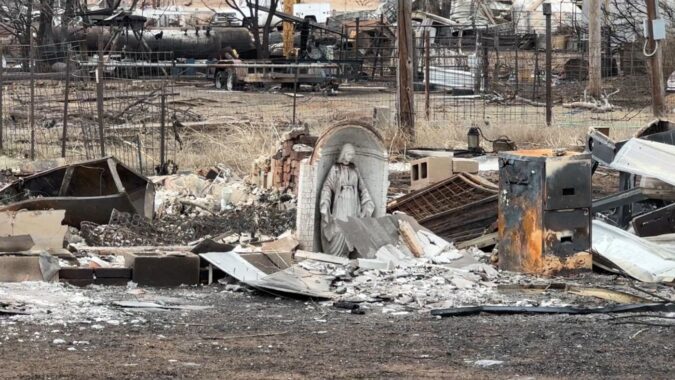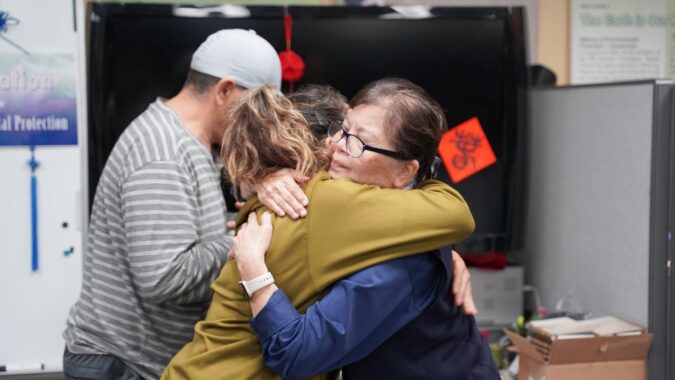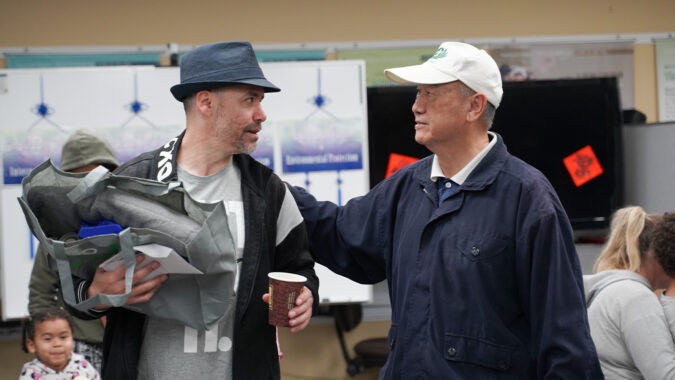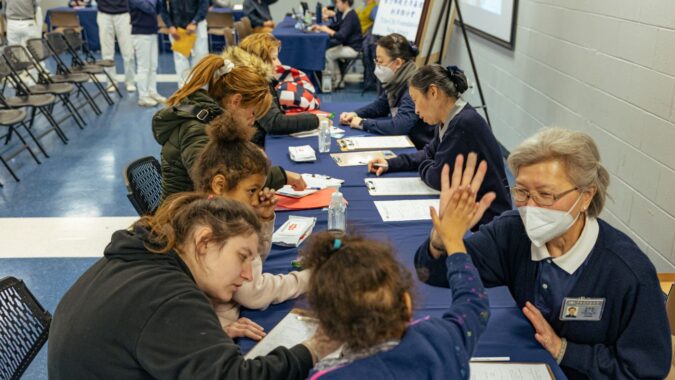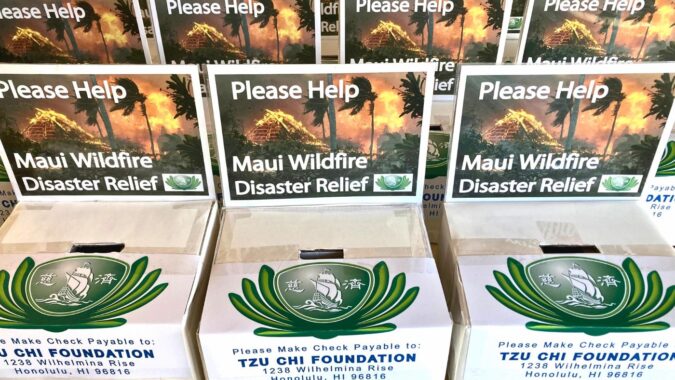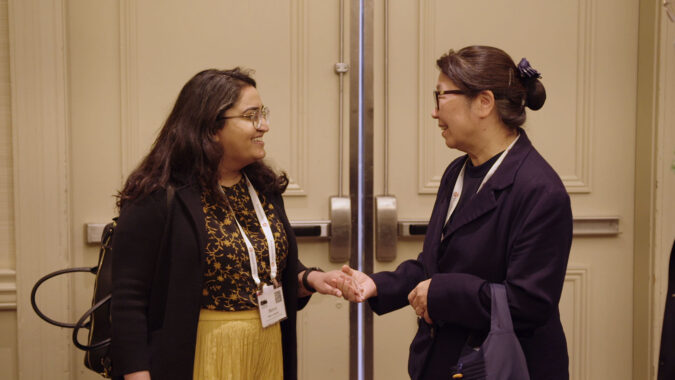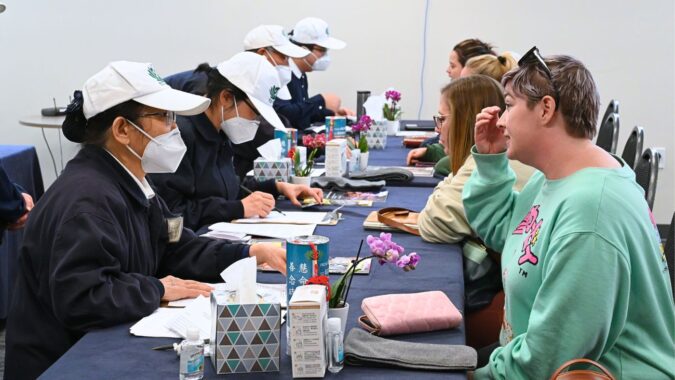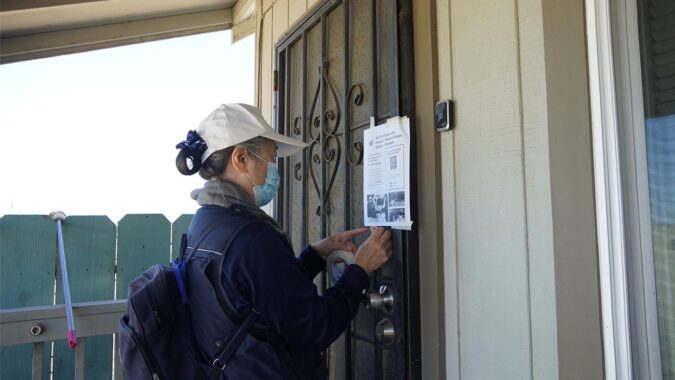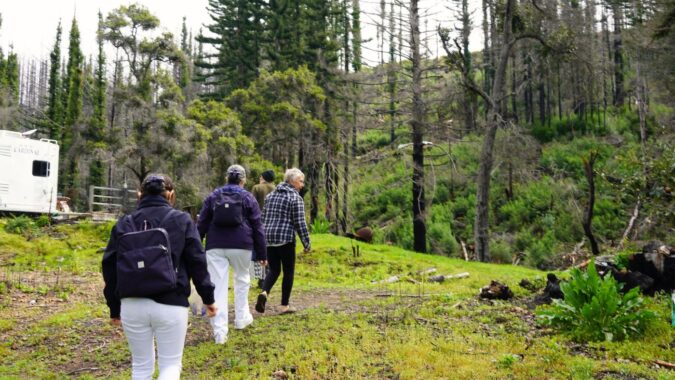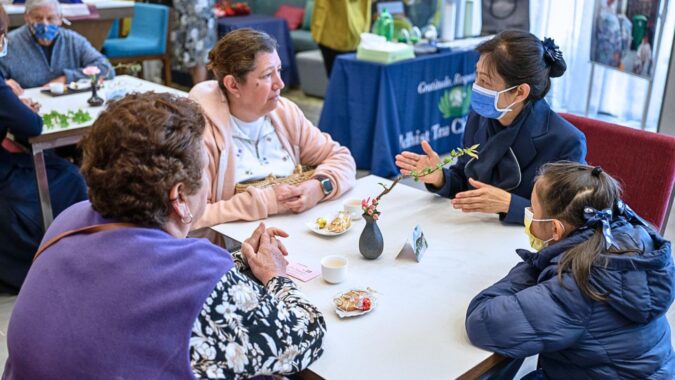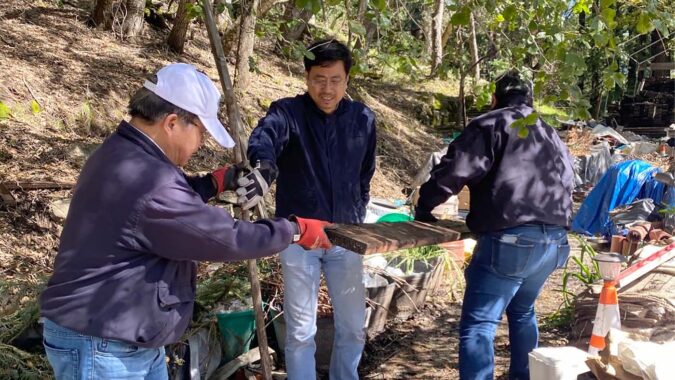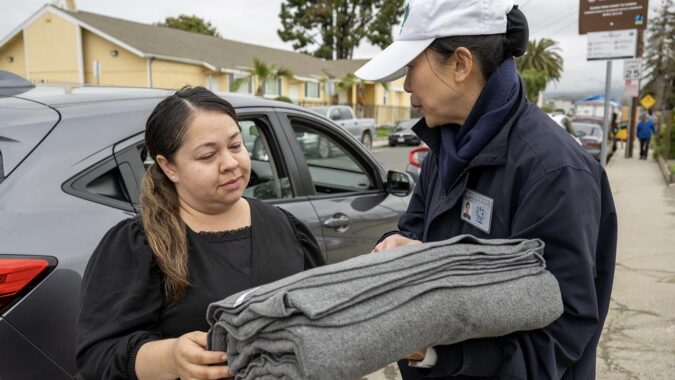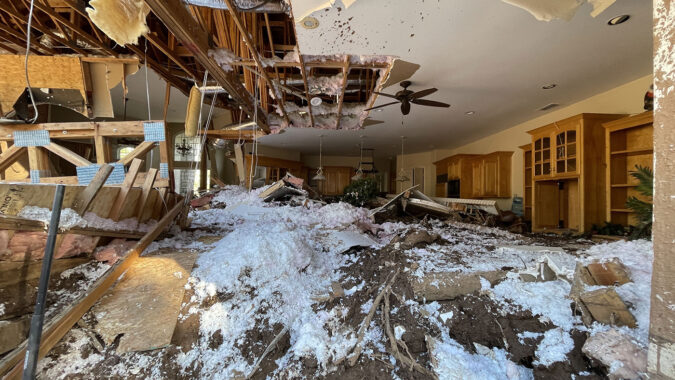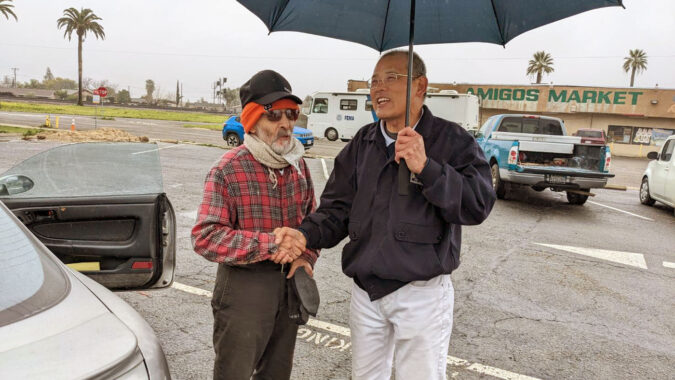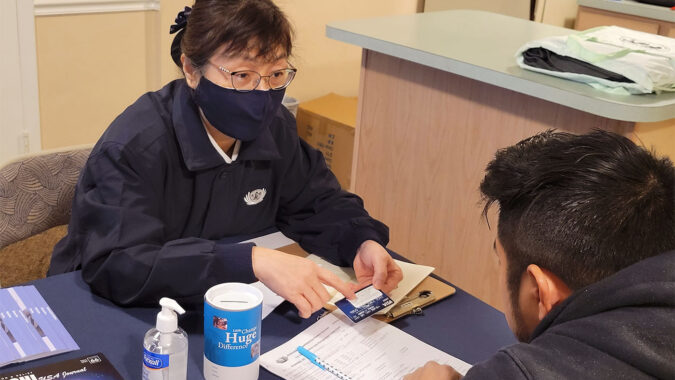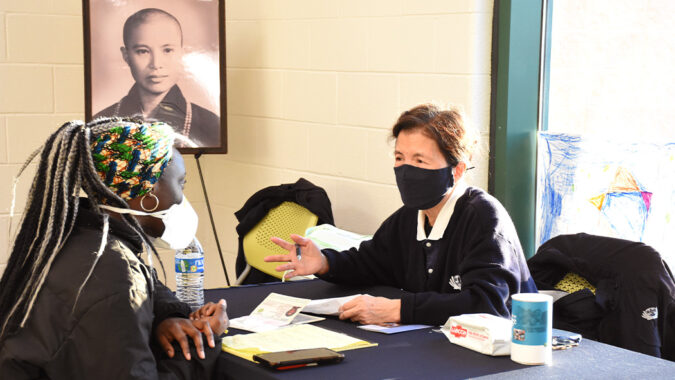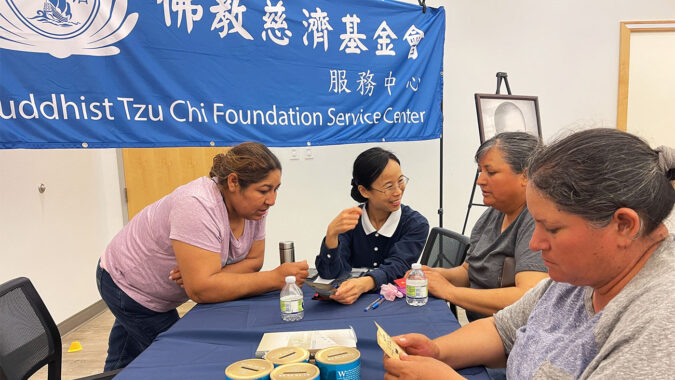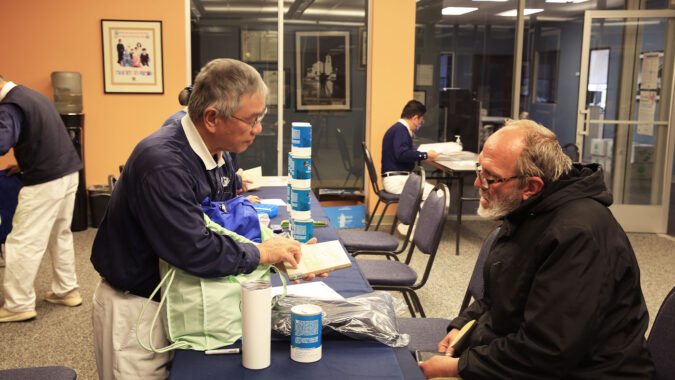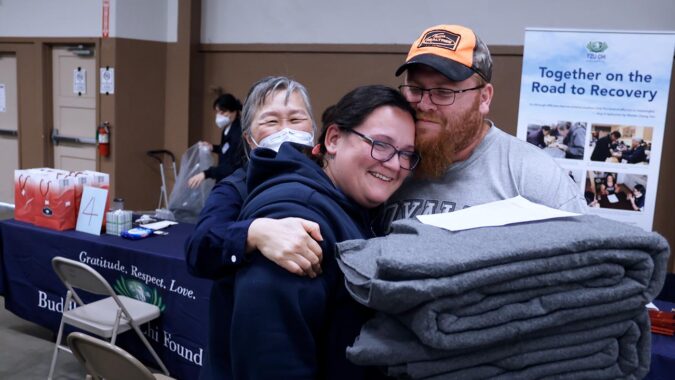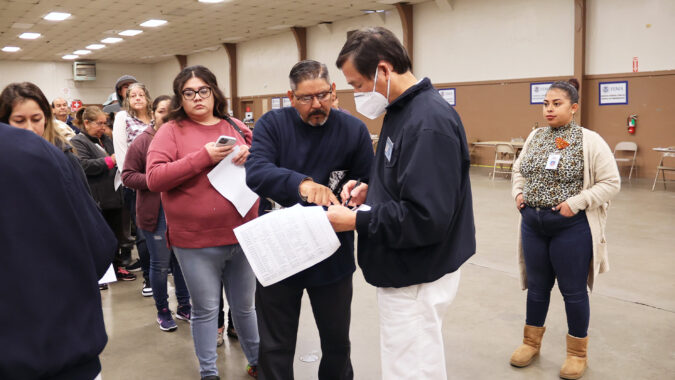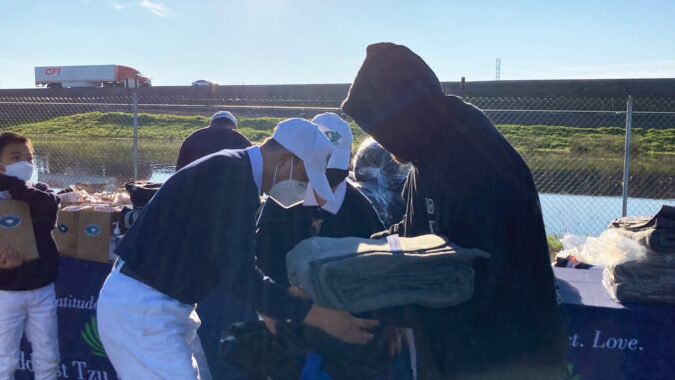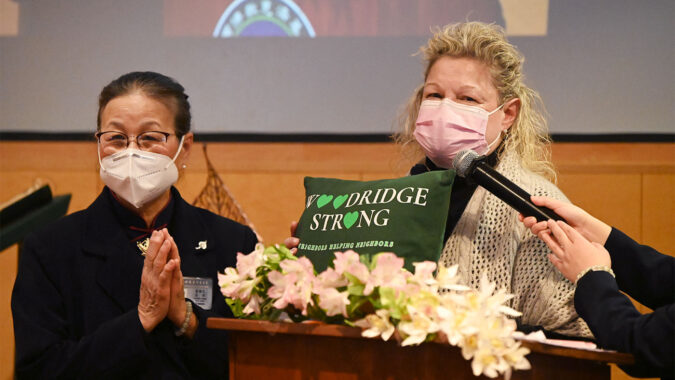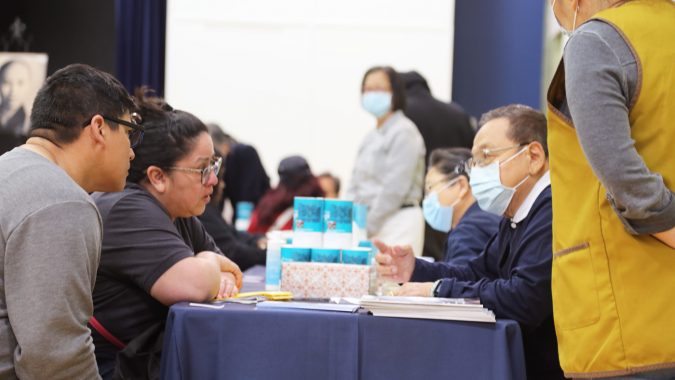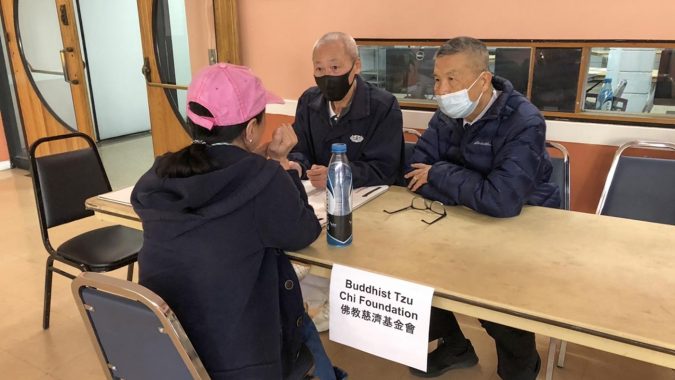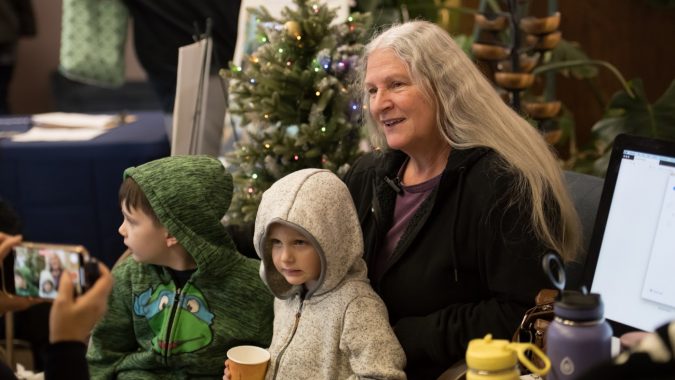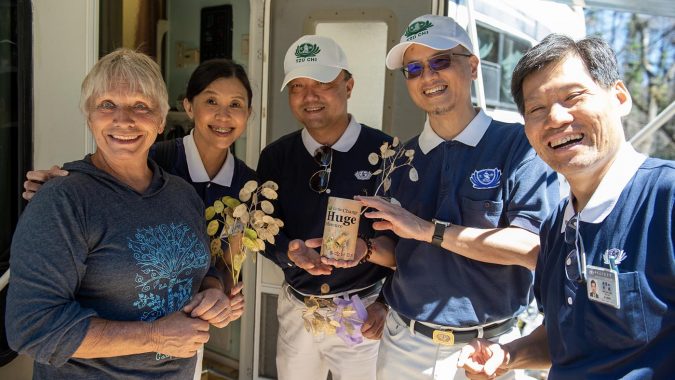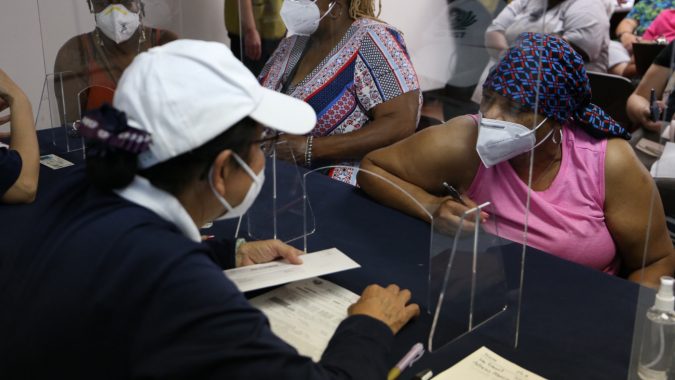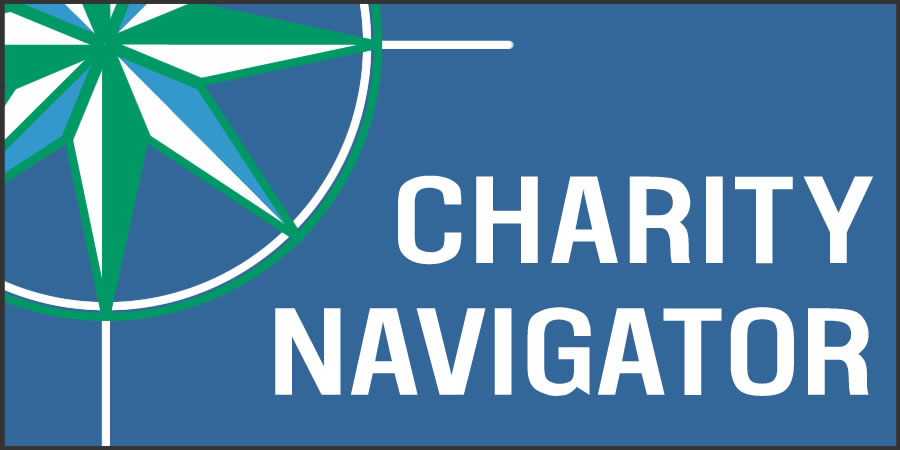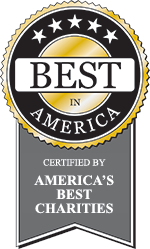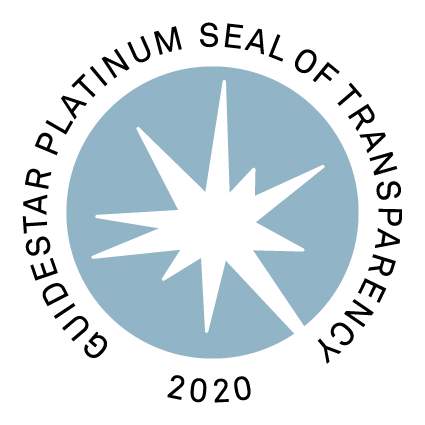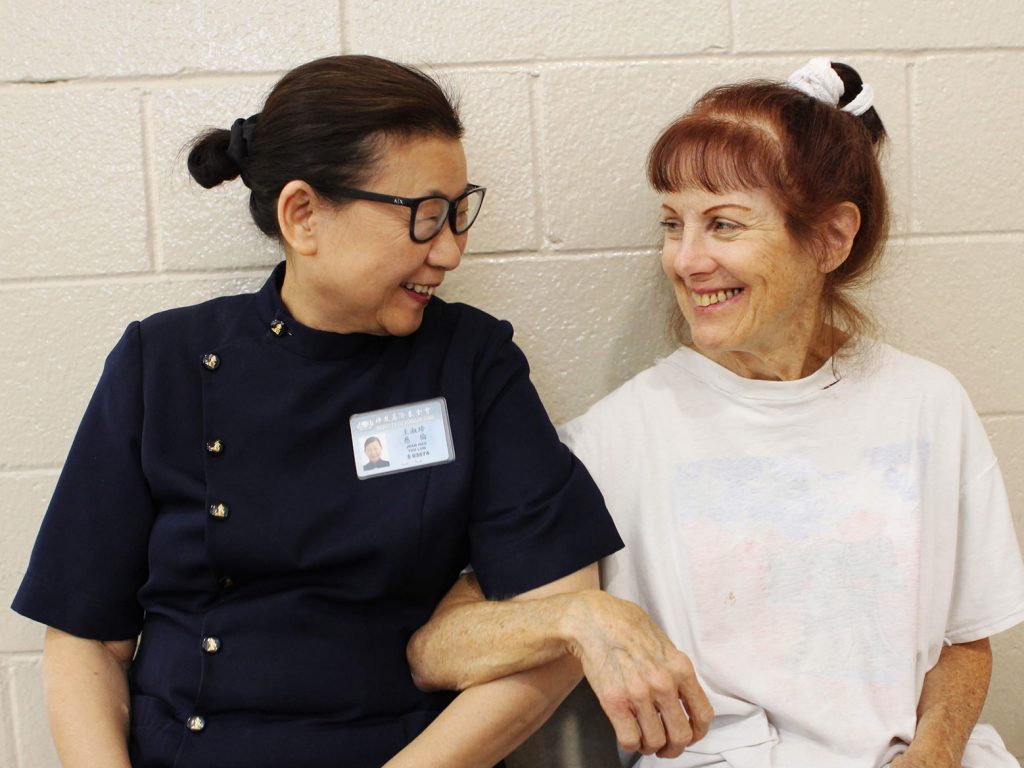
Translated by Diana Chang
Edited by Natasha Palance
The Saddleridge Fire that ravaged the San Fernando Valley spread rapidly, burning nearly nearly 8,800 acres this past month. After mandatory evacuation orders in the San Fernando Valley were lifted, many were still unable to return home due to the unhealthy air conditions. In the face of hazardous smog and challenges in obtaining aid, survivors find solace in Tzu Chi relief from personal door-to-door visits, in sharing their stories, and temporary living accommodations in the personal home of one Tzu Chi volunteer.
After hearing news of the wildfire’s ignition on Thursday, October 10th, Tzu Chi Northridge volunteers promptly mobilized door-to-door visits in impacted areas to help evacuated residents. Tzu Chi Northridge volunteers Tzu-Luen and Jhih-Long Hsu led a team to visit family members of volunteers throughout the day. With a compassionate heart, Tzu-Luen invited five evacuated households to temporarily stay at her home, including survivor and Tzu Chi Volunteer Fuh Meei Joy and her family.
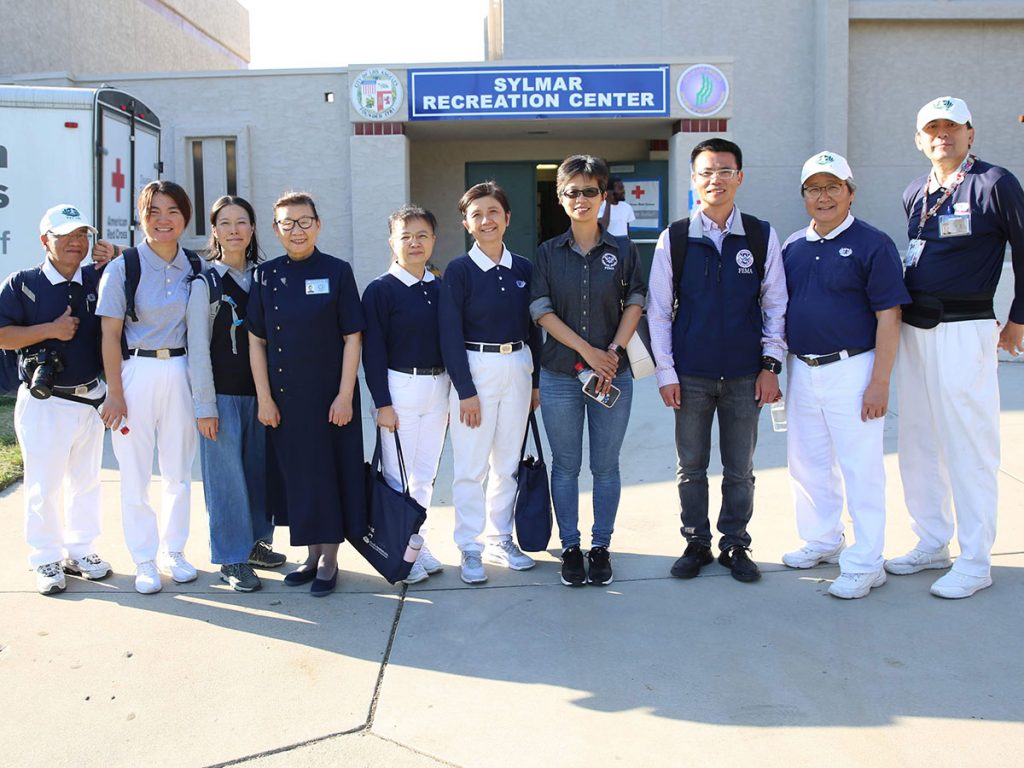
The fire’s danger zone was frighteningly close to Fuh Meei Joy’s home on the morning of October 11th; she recalled seeing a field of blazing fire from the window that night. When she heard the police sirens and police cars outside at 2 a.m., the wind was fiercely howling and Fuh Meei was confused in the chaos. After discovering the evacuation alert, Fuh Meei woke up her husband and child to quickly escape.
Unable to return home, Fuh Meei and her family went to Tzu-Luen Hsu’s home on the afternoon of the 11th. Tzu-Luen described it as a “family reunion, making the house full of laughter and sweeping away negative energy from the fire.” Fuh Meei looks back on her experience to share insight into the importance of emergency preparedness:
From the time of packing things into the luggage until placing the luggage at the door, it took us about an hour. But, I only packed my clothes, passports, etc. Usually in an emergency, authorities will ask residents to leave within 30 minutes. The best thing to do is to get things packed in advance, then add any other things you still need with the allotted 30 minutes.
Fuh Meei Joy, Survivor and Tzu Chi volunteer
At Capacity Shelters and Low-Income Challenges
Tzu-Luen’s home is currently being renovated to serve as a home for Tzu Chi volunteers, and to host Tzu Chi events including tea parties and Bodhisattvas recruitments. There are currently four rooms available in the house – just right for temporary accommodation for three evacuated families. If you or a loved one has been displaced by the California wildfires, visit our Resource Recovery Center for more information.
Curtis Hsing, Head of Tzu Chi USA Disaster Relief, visited the Sylmar Recreation Center to advance Tzu Chi’s efficiency in support of the local resident evacuation process, as well as the Incident Command Post to better understand the communication process during emergency disaster relief aid within the country.
At an American Red Cross shelter at the Sylmar Recreation Center, the team interviewed Elisabeth, a survivor from the Hope Gardens community. On the night of the fire, a flame ignited close to the home community around the 5 Freeway. Residents of Hope Gardens were urgently informed to evacuate. For many Californians, including Elisabeth, wildfire threats like these are a common occurrence, and assuring disaster aid each time becomes an increasing challenge.
This is my fifth or sixth evacuation. I evacuate at least once a year, and applied for low-income housing in 15 Los Angeles areas, but I need to wait at least one to two years on the waitlist. The low-income housing in Los Angeles is almost impossible to find.
Elisabeth, Survivor and resident at Hope Gardens
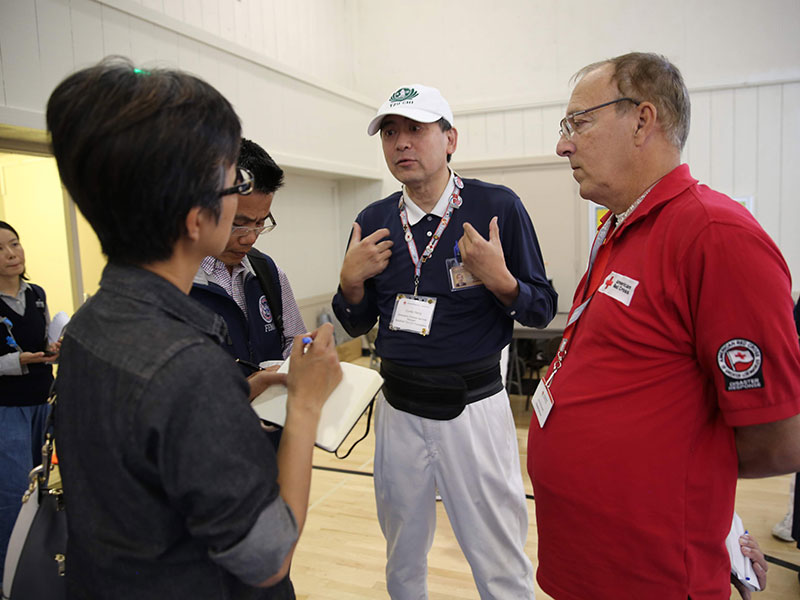
In crowded communities, local shelters are often quickly at capacity amid a disaster. The Sylmar Recreation Center shelter has a maximum capacity of 150, including individuals who reside in the parking lots. Cary Van Ausdall, American Red Cross Public Relations Representative, expands on how this limitation and other formal procedures directly impact survivors: “Although there are no houses burned, we won’t get notices about the damage of the houses until residents return home. Some of the apartments have to go through a higher level of inspection before residents can go home, so we’re going to keep the shelter open until we know that everyone can really go home.”
We want to make sure everyone can go home safely.
Cary Van Ausdall, American Red Cross Public Relations Representative
A Community of Mutual Support
Despite the great danger from the flames, residents of the San Fernando Valley still engaged in a community of mutual support, as shown in one Porter Ranch survivor’s story. On October 11th, the day before the fire, Mr. Wang and his family were alarmed by a concerned neighbor at 2 a.m. The neighbor reminded them that the authorities have asked them to cooperate with the mandatory evacuations within the community.
“When a fire breaks out, residents should be evacuated if they are told to evacuate, because our rescuers need to be able to enter the area safely and quickly,” Chris Reade, L.A. County Fire Department spokesman explains. “If the residents are evacuating and we are entering the disaster area, then we need to stop. Prioritization in helping them to a safe place plus worrying about their safety will delay the fire containment plan.”
The Wang family evacuated for their safety, but struggled to find housing in the crowded community. With only five shelters near their home, one was already at maximum capacity with tens of thousands of people. While some displaced residents resorted to staying in parking lots with tents, Mr. Wang attempted to book a hotel room for his family only to discover that nearby hotels were already full as well. After some additional searching outside the community parameters, they finally found a decent hotel for their temporary stay, 50 miles away from home in Downey.
Evacuation orders were lifted on the 12th, but smog from the flames remained, which left many residents returning home to still-hazy conditions. A neighbor warned the Wang’s of the unhealthy air quality that lingered in the community. For the health and safety of his family, Mr. Wang decided to stay for another night and later return home on Sunday in hopes of better breathing conditions.

